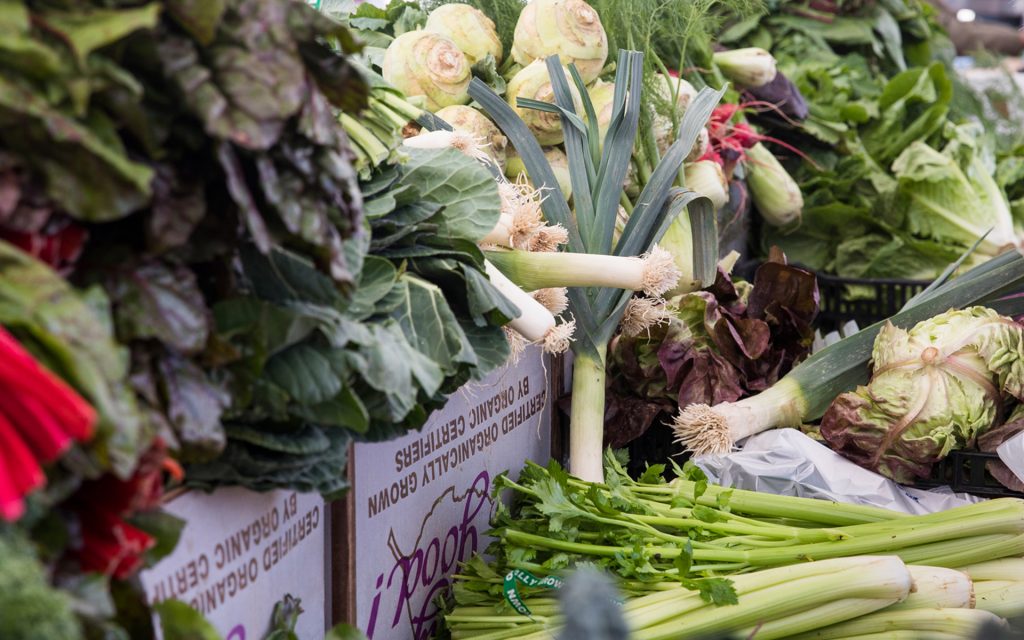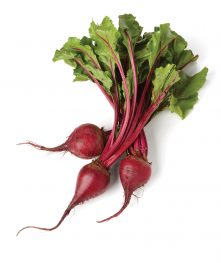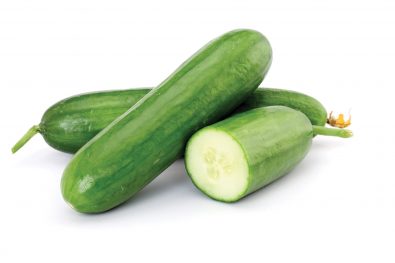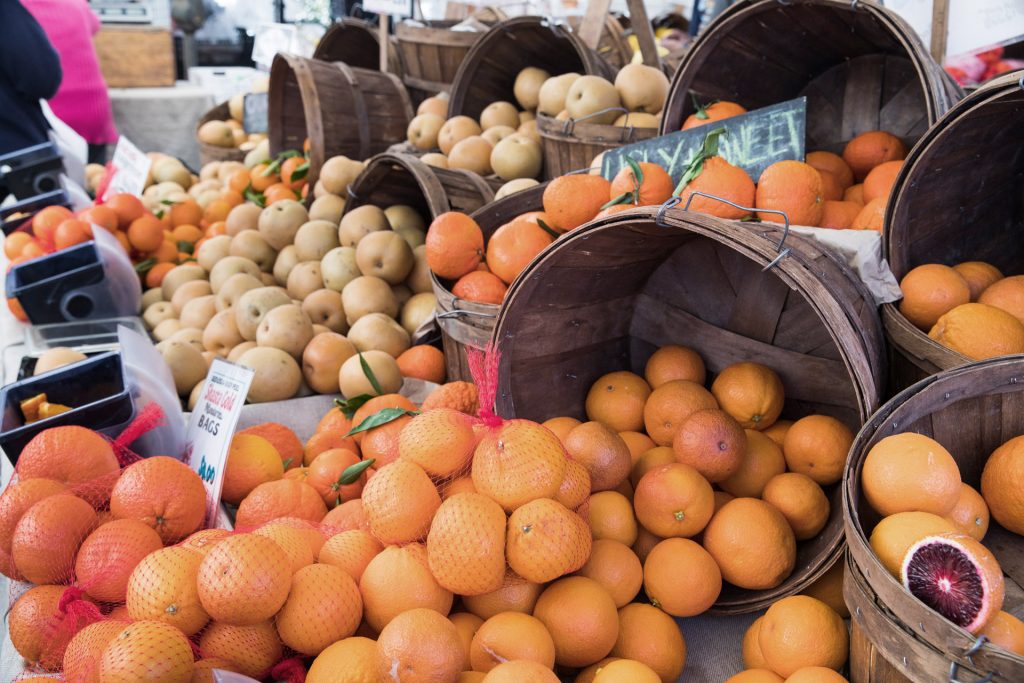
What exactly does it mean to green your diet? Apparently, there is no definitive definition. “Going green can be such a trendy tag line — it can go in so many different directions,” notes Rémy Leigh Peters, a registered dietitian at the Roy and Patricia Disney Family Cancer Center at Providence Saint Joseph Medical Center in Burbank.
 When people say “green,” are they trying to be more environmentally conscious, eat food that’s more organic, with fewer pesticides and fewer GMOs? she asks. Are they trying to eat more whole foods that they’re preparing themselves? “Or are they getting it mixed up with ‘This is organic, so it must be healthy?’ Just because something is organically grown doesn’t mean that it can’t be adulterated so that it no longer has the health benefits that it originally started out with,” Peters points out.
When people say “green,” are they trying to be more environmentally conscious, eat food that’s more organic, with fewer pesticides and fewer GMOs? she asks. Are they trying to eat more whole foods that they’re preparing themselves? “Or are they getting it mixed up with ‘This is organic, so it must be healthy?’ Just because something is organically grown doesn’t mean that it can’t be adulterated so that it no longer has the health benefits that it originally started out with,” Peters points out.
Whatever your interpretation, going green indicates that you’re trying to be healthier — for yourself and for the planet. Peters, who works with cancer patients, has some specific suggestions to help.
Keeping It Natural and Seasonal
First, “stick as closely as possible” to nature. “What has the earth grown for us?” she says. “I believe all of our healing constituents, phytonutrients, are in foods that are grown. So how we incorporate that into our diet as much as possible is really what’s going to be the basis of a healthier, disease-free lifestyle.”
Another suggestion: Eat with the season. “Seasonal produce is incredibly optimal, fresher and nutritionally superior, because they’re usually sun-ripened so they’re at their point when nutrition density is highest,” she says.
In the spring, “dark green leafies, such as Swiss chard and beets, help detoxify our blood and oxygenate our bodies and renew ourselves.”
In the summer, “we have a lot of hydrating fruits and vegetables — like watermelon and cucumbers — and they’re high in vitamins A and C” and help combat sun exposure.
During winter and fall, “we have things like onions, potatoes, squash and leeks. Those are grown mainly underground. They store longer. And they’re perfect for warm foods like soups and stews. They’re also high in vitamin C and antioxidants and can help with immunities.”
Going Organic
 Fruits and vegetables that aren’t organic were “probably harvested early, so they weren’t ripened [and] don’t have all the nutrient density,” Peters says. In addition, they were likely “chilled, which makes the taste deteriorate a little, and probably flash-warmed or warmed in a hothouse so that they can artificially ripen. The transportation, maybe the radiation, or the waxing — all that can take away from the taste and the crispness.”
Fruits and vegetables that aren’t organic were “probably harvested early, so they weren’t ripened [and] don’t have all the nutrient density,” Peters says. In addition, they were likely “chilled, which makes the taste deteriorate a little, and probably flash-warmed or warmed in a hothouse so that they can artificially ripen. The transportation, maybe the radiation, or the waxing — all that can take away from the taste and the crispness.”
And is the nutrient content affected?
“There’s really not a difference in nutrient content,” she says. Whether foods had “something spritzed on them or not, it doesn’t take away the nutrient value. We want to try to eat organic, but nonorganic fruit is better than no fruit at all. You’re still getting a lot of nutrient value.”

Farmers markets are good sources of organic produce, and Peters is a big proponent. “I try to visit as much as possible and support them,” she says. “I’ve gone to the one in upper Burbank. There’s one on the corner of Forman and Riverside. There’s one on Sundays on Laurel Canyon and Ventura, which is big and fun,” she says. (See “Farmers Markets in and Near Toluca Lake” for a list of area options, or visit the U.S. Department of Agriculture’s National Farmers Market Directory.)
Peters offers the following tips for shopping at farmers markets:
- Talk to the farmers. “They like to brag about their fruits and vegetables and where something is from. Ask them where [the produce is from] and ask them about the soil. I’ve learned so much just from chatting with people over the years,” she says. This includes vendors who “may not have the money to get the actual organic certification, but they’re probably taking care of their crops in the sense that they’re still following certain guidelines.”
- Know what’s in season and what the hot commodity is out there.
- Look for variety in color and shape. “It doesn’t have to be a perfect-looking fruit or vegetable for it to be nutrient dense or any more healthy.” If you’ve ever grown your own produce, she says, you know they don’t always look perfect: “It’s OK to love those awkward-looking veggies and fruits.”
“I’d like to direct people to what is called the Dirty Dozen or Clean 15,” Peters adds. The lists, put out annually by the Environmental Working Group, a Washington, D.C., nonprofit dedicated to protecting human health and the environment, are consumer guides to pesticides in produce. But just as Peters noted that it’s better to eat nonorganic fruit than no fruit at all, the EWG also cautions against automatically dismissing the produce on the Dirty Dozen list. Those items are still more healthful for you than processed foods that have fat, sugar or additives, it says.
And nothing beats the taste of home-grown. “We’ve all had that apple that tastes all pithy on the inside and a tomato that tastes kind of like meh,” Peters says. “But then you grow your own and then you go, ‘Wow, that’s what it’s supposed to taste like!’ And that’s not even talking about organic or not.”
If you’d like to learn more about nutrition, antioxidants and immunities, see Peters’ Facebook page for information about the free classes and workshops that she teaches.
